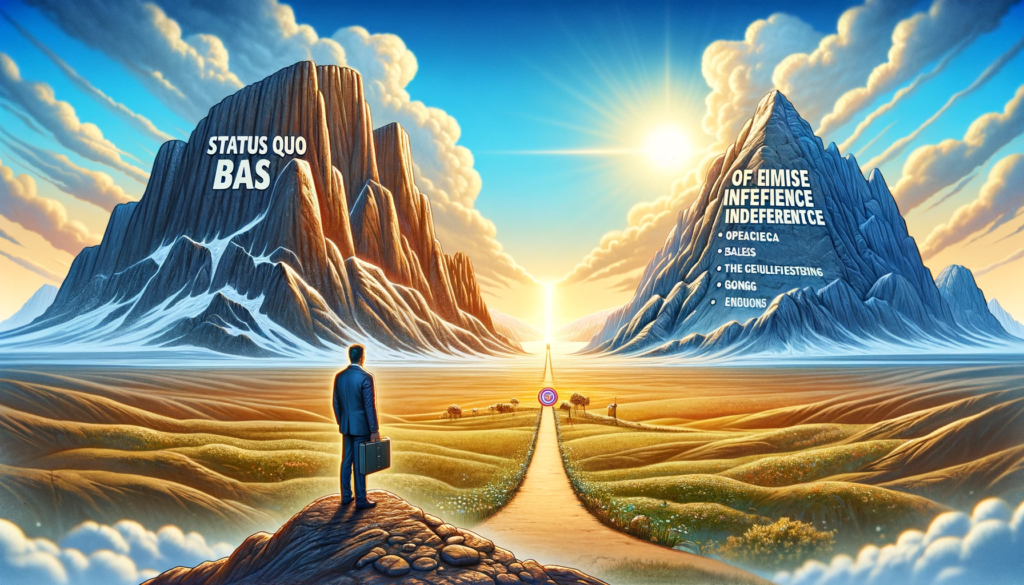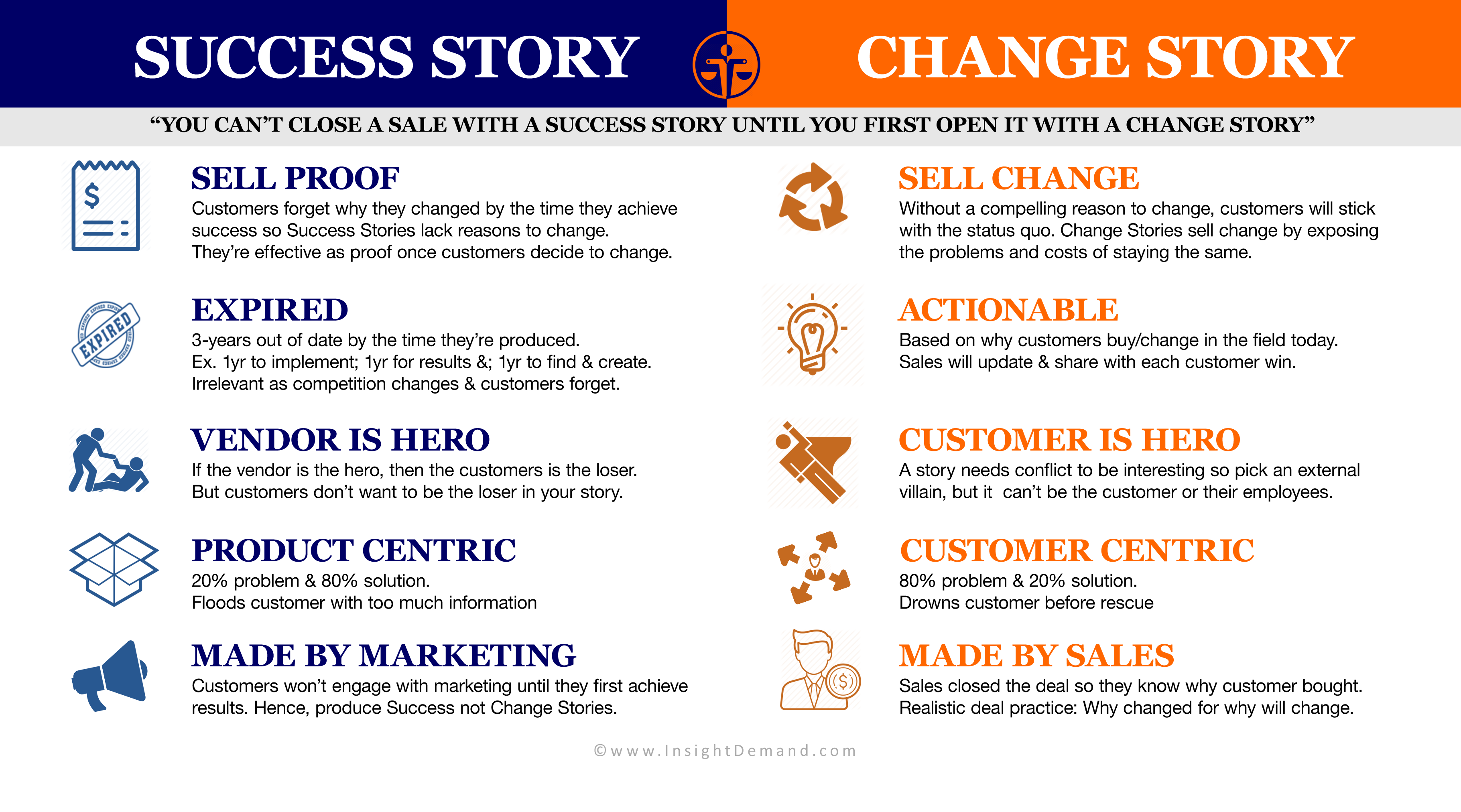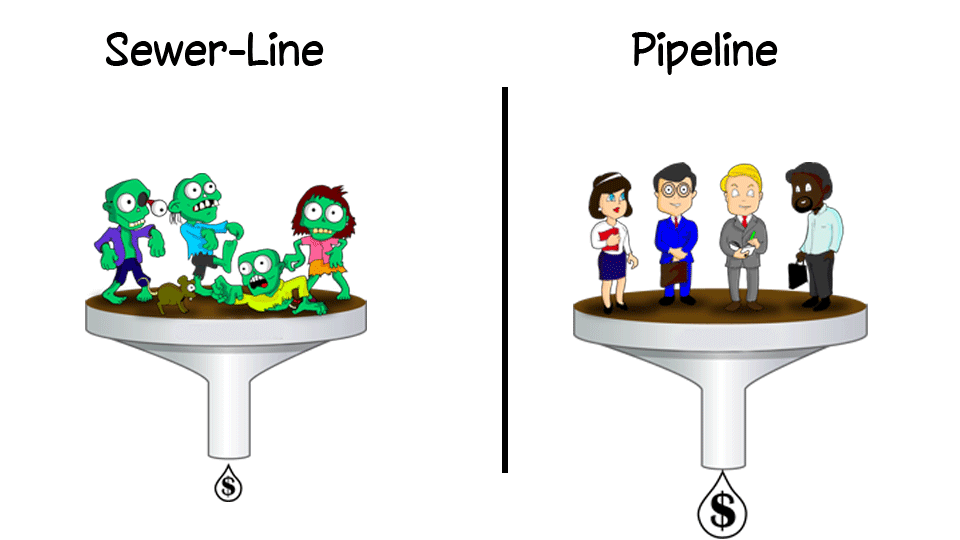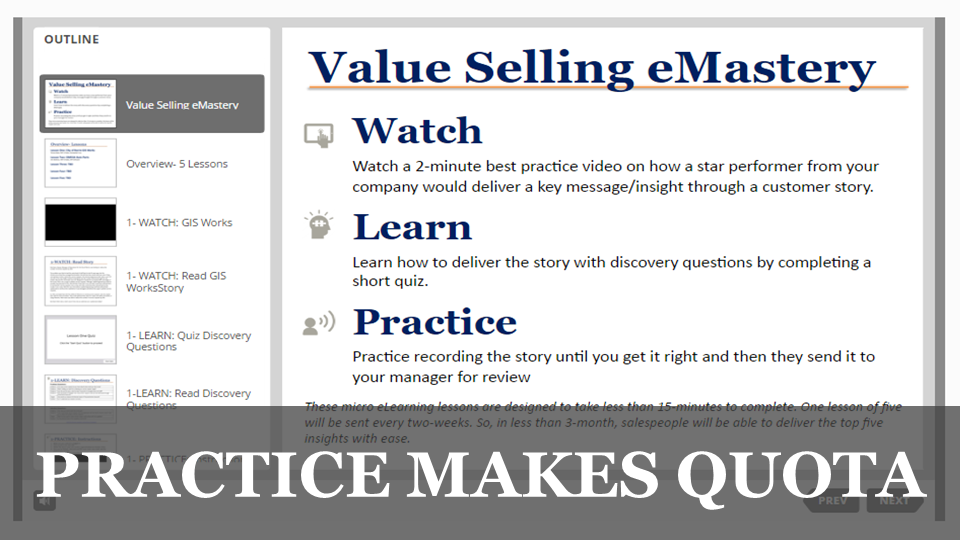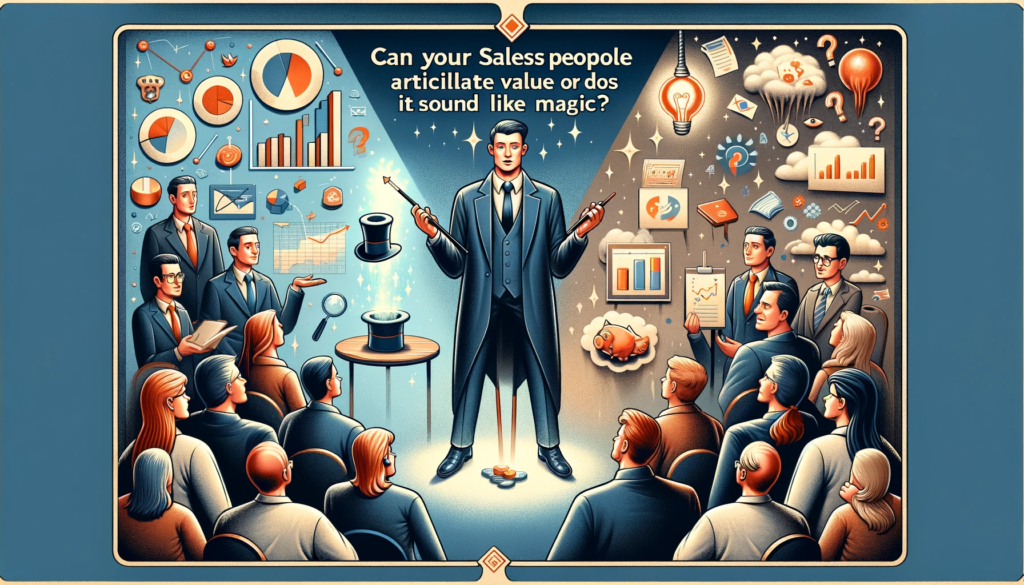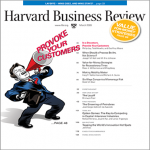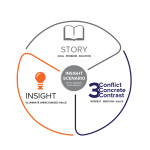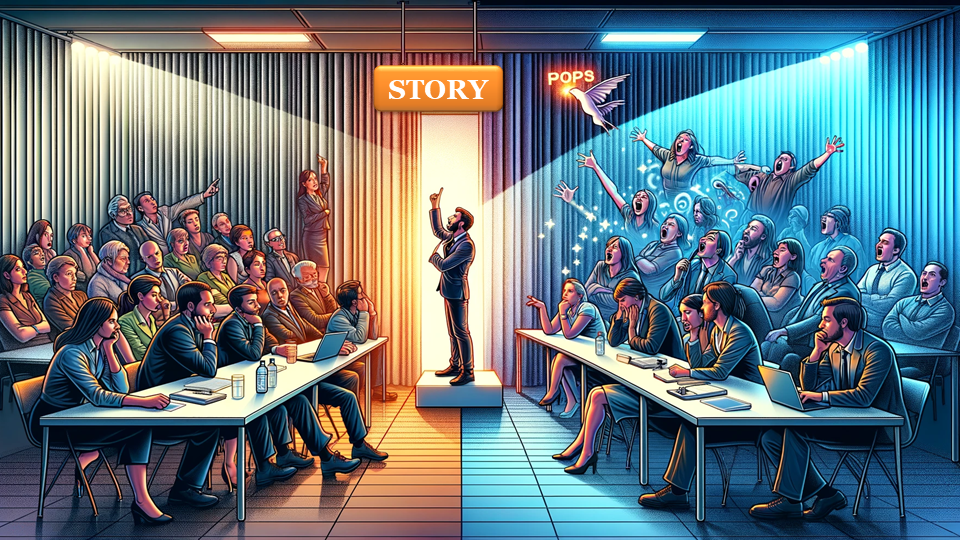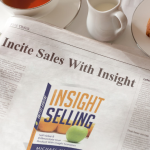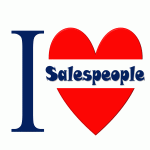
Can AI transform the role of salespeople, making them more effective and valuable? McKinsey & Company’s June 2023 report, ‘The economic potential of generative AI: The next productivity frontier,’ identifies Sales & Marketing as one of the top four sectors comprising up to 75% of the value generative AI can offer.
But what is the most impactful AI use case for sales professionals to increase their earnings? This question was the driving force behind my capstone project for the “Transform your Business with ChatGPT” course at Quantic School of Business & Technology (see Capstone Project link below).
The report explores how AI can revolutionize lead generation for sales. While Marketing efficiently generates leads with broad-reaching content, this approach often misses the mark in addressing the nuanced needs of specific sub-verticals or special situations. A more focused, bottom-up approach from the sales field, using targeted niche marketing messages, can more effectively resonate with prospects’ unique requirements, inspiring deeper engagement.
Historically, niche marketing has been limited by its specificity: the costs of creating and marketing testimonial customer videos to a narrow audience often outweighed the benefits. Now, however, advancements in technology like Teams video calls and AI have changed the game. These tools allow for the automation of numerous time-consuming tasks, and marketing no longer needs a full production crew for customer testimonial videos intended for a small, targeted audience.
AI can automate these critical tasks:
- Transcription of Teams video calls;
- Creation of video scripts, targeted emails, and calling scripts;
- Enhancement of contact data quality;
- Sending and tracking of emails; and
- Scheduling meetings.
While it may seem somewhat futuristic to envision an AI Chat Bot booking meetings, it’s fascinating to know that AI is now capable of conducting phone calls lasting 10-40 minutes, sounding remarkably human-like. To see this in action, check out this demo (Click here for a demo). This raises an intriguing question: could such a tool effectively be employed to schedule meetings for sales purposes?
This Capstone Project focuses on a hypothetical company, ERP Corp, but the insights are applicable across various B2B industries.
If you have a moment to review the report, I’d love to hear your thoughts:
- Could niche marketing be a game-changer in lead generation for your company? Are there any aspects you’d refine?
- How would you improve data hygiene in your organization?
- What are your views on AI Chat Bots making calls – innovative or a potential for misuse, or perhaps both?
- Are there any AI tools you’ve used that could effectively meet these objectives? Your insights and feedback would be greatly appreciated
CAPSTONE PROJECT

AI + Niche Marketing = More Leads for ERP Corp
EXECUTIVE SUMMARY
This Capstone Project introduces a ground-breaking AI Adoption Plan for ERP Corp, an Enterprise Resource Planning software industry leader with $1 billion in revenue, headquartered in NYC. Addressing the challenges of generic vertical marketing, which often falls short in meeting the unique needs of sub-verticals; this plan proposes an AI-driven strategy that focused on opportunistic niche marketing. This approach is tailored to exploit deep value wedges within specific sub-verticals, aiming to secure more business.
Central to this strategy are special cases within sub-verticals such as Prefabricated Metal Building, where AI technology will be leveraged to develop marketing strategies that align closely with their distinct requirements. The plan encompasses a suite of AI tools for data analysis, content creation, customer targeting, and outreach, all geared towards significantly boosting ERP Corp’s market penetration and engagement.
This AI Adoption Plan marks a paradigm shift in ERP Corp’s marketing approach, setting a new benchmark for the innovative use of AI in targeted marketing within the ERP sector. Anticipated outcomes include increased revenue, leads, and expanded new business opportunities.
THE CHALLENGE
ERP Corp’s Manufacturing division faces a complex market landscape, comprising ten distinct Manufacturing verticals each with several sub-verticals, each presenting unique marketing challenges. For example, the Metal Fabrication vertical alone is split into 38 sub-vertical SIC Codes, ranging from Automotive Stamping to Prefabricated Metal Building and Components. Creating a unique marketing approach for each of the 400+ sub-verticals is impractical, yet there’s significant potential for targeted niche marketing in certain high-value cases.
A prime example of specialized industry requirements is found in the Prefabricated Metal Building sub-vertical. Companies in this segment, like Metalway Building Systems, necessitate integrations with their industry specific Computer Automated & Design and Estimating software. This integration is vital for Metalway to efficiently estimate and track the run rate for welds, which is a crucial part of their operations.
Metalway realized that major ERP systems, including ERP Corp, did not inherently offer this functionality. This lack of functionality presented a significant problem, as Metalway efforts to develop a customized solution with a major ERP vendor resulted in an integration that was problematic and constantly required reworking. Given that unproven customizations were not a viable option, Metallway found itself compelled to consider smaller, industry specific ERP vendors. While these niche vendors could provide the specific integration Metalway needed, they lacked the wide-ranging capabilities offered by larger Enterprise ERP systems.
The turning point for ERP Corp came unexpectedly late in the sales cycle when a salesperson discovered by chance that ERP Corp had already successfully integrated these specific systems for another client, Modular Buildings. This discovery was pivotal as it enabled ERP Corp to showcase its proven capability in this specialized integration. Demonstrating this success played a key role in ERP Corp winning Metalway’s business, highlighting the importance of leveraging past experiences and adaptability in meeting unique industry requirements.
As an experiential proof point for Niche Marketing, consider being the COO of a Prefabricated Metal Building company and receiving these two marketing messages. Evaluate which message presents a more compelling and relevant case for considering ERP Corp’s services:
- A report detailing ERP Corp’s capabilities in Fabricated Metals, or;
- Information on how ERP Corp’s customers in the Prefabricated Metal Building industry can now efficiently estimate and track the run rate for welds due to their proven industry specific Computer Automated & Design & Estimating software integration, as confirmed by a customer testimonial video from Modular Buildings.
Unfortunately, the Modular Buildings success story was not leveraged in ERP Corp’s marketing strategy for several reasons:
- Marketing’s Focus on Top Verticals: ERP Corp’s marketing team primarily concentrates on the top ten Manufacturing verticals, lacking the capacity to engage in niche tactical marketing. This focus limits their ability to develop and execute marketing campaigns for specific success stories like that of Modular Buildings.
- Sales Territory Division: The sales division is organized into 20 geographic territories. In each of these territories, there is a limited presence of companies relevant to niche success stories like Modular Buildings. This scarcity makes it impractical for sales representatives to invest time in learning and sharing these unique stories.
- Business Development Representatives’ Lead Sources: Business Development Representatives at ERP Corp tend to prioritize leads generated by marketing. These leads usually come with essential contact information, such as names, emails, and phone numbers. In contrast, pursuing new leads or updating the CRM is deemed less efficient, as about 75% of CRM contacts are outdated, making this a less appealing task for the representatives.
This represents a missed opportunity, as there are 200 to 400 companies in the full territory, even though there may be only 10-20 companies in each sales region. This would justify setting up a Teams Video call with Modular Buildings’ CIO to create a testimonial video, and then marketing this unique capability to these companies.
The challenge lies in streamlining the workload for niche marketing. It’s a lot of work to create the video, clean the database, send out emails, track the open and click rates, and then if the BDRs or Salespeople don’t make the calls, it all becomes a wasted effort.
But what if we could not only automate numerous time-consuming steps using AI but also reduce dependence on BDRs or Salespeople for cold calls? Picture an AI Chat Bot capable of conducting 10-40 minute phone calls that are indistinguishable from those with a real human. This is rapidly becoming a reality with AI advancements, as demonstrated by this groundbreaking technology available her (click). Although the demo looks promising, the tool will need to be tested to determine if it can have the nuanced conversations to book meetings for salespeople. While the demonstration is impressive, it’s crucial to evaluate the tool’s effectiveness in having nuanced conversations necessary to schedule meetings for salespeople.
THE SOLUTION
The proposed solution is a comprehensive AI-driven strategy designed to overcome the marketing challenges faced by ERP Corp:
- AI-Driven Story Selection and Video Creation: This involves using AI to identify successful customer stories[1], such as Modular Buildings’ integration success, and to create compelling marketing content. AI tools will be used to organize video calls, transcribe interactions, and assist in scriptwriting for promotional videos. This includes leveraging generative AI models for scriptwriting and employing video editing tools to craft engaging content.
- Targeted Marketing with AI Assistance: The strategy implements AI to enhance the precision of targeting potential clients. Data scraping tools, such as Apify, will be utilized to extract data from sources like Dun & Bradstreet, LinkedIn, and company websites. This data will be used to build a targeted database, enabling the creation of more relevant and impactful marketing campaigns.
- Automated Outreach and Engagement: This element revolutionizes email marketing and customer outreach through AI. Automation tools will be used to manage email campaigns and track engagement metrics. AI-driven cold calling technologies, like AIR AI, will conduct nuanced conversations, thereby enhancing outreach effectiveness without needing extensive human resources (click demo).
- Niche Marketing Campaigns: The approach includes employing AI to create and implement niche marketing campaigns for different sub-verticals. These campaigns will utilize AI-generated content, such as the testimonial from Modular Buildings, combined with tailored emails and strategic follow-ups, to effectively engage potential customers.
- Data Update and Management with AI: Integrating AI with ERP Corp’s CRM systems, such as Salesforce, is crucial to ensure that contact data is current. AI will regularly scan and update contact information, supporting the marketing efforts with accurate and up-to-date data.
- Track Results: The strategy includes tracking key metrics such as email open and click rates, leads, meetings, demos, sales orders, and deals won. This tracking will provide valuable insights into the effectiveness of the marketing campaigns and strategies.
By adopting this AI-driven approach, ERP Corp aims to target specific sub-verticals with tailored messages and efficient follow-up strategies. This could potentially lead to higher conversion rates and improved customer satisfaction. Focusing on niche markets and leveraging AI for data-driven insights and automation, ERP Corp can expect a significant improvement in the effectiveness of its marketing efforts. As highlighted by McKinsey, investing in AI for Sales & Marketing is beneficial, with about 75 percent of the value delivered by generative AI use cases falling across areas including customer operations, marketing, sales, software engineering, and R&D.”[2]
THE SPECIFIC AI SOLUTION
In a consultation with Dr Joerg Storm, a renowned AI expert and publisher of the fastest-selling AI newsletter, valuable insights were provided for this Capstone Project:
- Centralize Data: Consolidate all data-related steps within a single CRM system like Salesforce for streamlined management and accessibility.
- Explore Off-The-Shelf AI Tools: Before developing a bespoke solution with Chat GPT or other advanced models, assess the feasibility and effectiveness of numerous available AI tools.
- Utilize AI for Varied Functions: Dr. Storm confirmed the potential of AI in facilitating various marketing tasks, including video interviews, content creation, email campaigns, and success tracking.
Implementing this AI-driven marketing strategy involves integrating a suite of readily available AI tools and technologies:
1) Salesforce and Einstein Generative AI: These tools are used for managing CRM data and communications, aiding in identifying compelling customer stories based on monitoring customer wins and communicating with key players in the field, and then facilitating video customer interviews.
2) Microsoft AI for Transcription: This tool is employed for transcribing Video Teams meetings, providing accurate transcripts essential for content creation and scriptwriting.
3) ChatGPT 4 for Scriptwriting and Email Marketing: ChatGPT 4 is utilized for generating engaging scripts for marketing videos and creating personalized emails tailored to each contact title’s unique needs. For instance, the transcript of a Teams meeting can be input into Chat GPT 4 to create a 90-second script for a promotional video, highlighting the reasons customers choose ERP Corp. This script is then meticulously reviewed and refined by the Niche Marketing Specialist (‘NMS’), using additional iterative prompts for further enhancement and brainstorming.
- Incorporating Direct Quotes for Persuasiveness: A follow-up prompt can be entered into ChatGPT, recommending the insertion of direct quotes from the customer instead of generic narration. This approach adds a layer of authenticity and persuasive effect to the script, making the content more relatable and impactful for the audience.
- Creating Introductory Emails: Once the final script is polished, it can be fed back into ChatGPT, this time to generate introductory emails. These emails are crafted to target specific contacts such as the COO, CFO, CIO, and VP of Engineering. The content of these emails is aligned with the refined script, ensuring consistency in messaging and maximizing the impact of the outreach.
These steps in scriptwriting and email marketing signify a strategic use of AI in crafting messages that resonate with the target audience. By leveraging the versatility of ChatGPT 4, ERP Corp can create highly customized and effective marketing materials that speak directly to the needs and interests of each sub-vertical and key decision-makers.
4) AI Video Generators: Tools like Wave Video are utilized for creating visual content and voiceovers, enhancing the appeal and relatability of marketing materials. While AI tools can generate a base video (examples), the most effective Niche Marketing Videos combine this with real customer stories. Therefore, manual inputs such as screenshots of customer LinkedIn profiles and company website pages, along with B-roll from company videos, are included for authenticity.
5) Data Scraping Tools[3]: For creating a comprehensive database essential for targeted marketing campaigns, ERP Corp will utilize several AI scraping tools, each serving a distinct purpose:
- Apify for Dun & Bradstreet Data: Apify will be employed to scrape data from Dun & Bradstreet, focusing on companies within the target SIC Code. This data will then be downloaded into an Excel sheet, which can be cross-referenced with ERP Corp’s existing CRM data in Salesforce (SF.com). This process ensures that any missing companies in ERP Corp’s CRM are identified and added, thereby enhancing the database’s comprehensiveness.
- Infatica.io for LinkedIn Contacts: To gather company contact information by title, Infatica.io will be used to scrape LinkedIn. Special care will be taken to use this specialist tool effectively, as LinkedIn may restrict accounts for mass data scraping. This approach allows ERP Corp to target specific titles within companies, ensuring a more focused and effective outreach.
- Brouse.ai for Company Website Data: Brouse.ai will scrape the Management section of company websites to extract title contact names. Additionally, Brouse.ai, coupled with ZoomInfo (Brouse.ai/ZoomInfo), will be used to gather data from ERP Corp’s subscription plan, including the format of email addresses and cell numbers. This multi-faceted scraping approach ensures a robust and accurate database for marketing purposes.
- Brouse.ai/IndeedJobs[4]for ERP System Insights: ERP Corp will also use Brouse.ai to scrape Indeed Jobs to understand which ERP systems potential prospects are currently using. This information is vital in tailoring ERP Corp’s marketing approach to showcase how their ERP solutions can be a superior alternative.
The integration of these sophisticated data scraping tools is a critical component of ERP Corp’s AI-driven marketing strategy. It ensures that the marketing team is equipped with a rich, accurate, and comprehensive database, enabling them to conduct highly targeted and effective marketing campaigns.
6) Integrating Data – Scraping & CRM: The integration of scraped data with ERP Corp’s CRM system is a critical step, using Power Automate for efficient data management. This involves importing scraped data into Excel, applying email formats from ZoomInfo, adding ZoomInfo contact details, comparing with SF.com customer data, automating the addition of verified contacts, and handling exceptions for unconfirmed contacts.
7) AI Cold Calling Bot (AIR AI): AIR AI eliminates the need to rely on BDRs or Salespeople for cold calls. This AI Chat Bot can conduct realistic, human-like phone calls, a ground breaking development in AI technology (click demo).
8) Sending Emails & Tracking Results: Using Einstein Generative AI within Salesforce, ERP Corp can efficiently manage email campaigns and track key metrics like open and click rates, leads, meetings, demos, sales orders, and deals won.
This integration of AI tools into ERP Corp’s marketing strategy is aimed at automating key aspects of the marketing process, from data gathering to customer engagement, thereby enabling more effective and efficient outreach to niche markets. The use of AI not only enhances operational efficiency but also provides deeper insights into customer behaviors and preferences, enabling more personalized and impactful marketing strategies.
COST ASSESSMENT
The adoption of these AI tools incurs an annual technology cost of approximately $22,536. The most significant expense within this budget is the AI Cold Calling Bot, accounting for $21,120 per year.
The calculation for the Cold Calling Bot is based on a monthly campaign targeting 200 niche companies, each with 4 contact titles, resulting in 800 contacts per month. At a rate of $0.11 per minute, the cost is derived by multiplying 800 contacts by 20 minutes each (totaling 16,000 minutes), leading to a monthly cost of $1,760, or an annual total of $21,120. This cost may fluctuate and is expected to stabilize as ERP Corp gains more experience with the tool. However, if the Cold Calling Bot performs as anticipated, its cost is relatively nominal compared to the expenses associated with a Business Development Representative (BDR) Sales Team or high-cost sales personnel making cold calls.
Excluding the expense of the Cold Calling Bot, the other AI tools contribute a comparatively modest annual cost of $1,416. This cost is manageable and allows for flexibility in testing the effectiveness of these tools. Should any of these tools not perform as expected, there are numerous alternative solutions available in the market.
POTENTIAL REVENUE
The potential revenue from the Niche Marketing campaigns is substantial. Targeting 200 companies per month, with a conservative estimated win rate of 1% and an average software sales value of $150,000 per customer, ERP Corp could achieve 24 additional new wins annually. This translates to an extra $3,600,000 in software revenue each year.
POTENTIAL PROFIT
With the projected additional revenue of $3.6 million and total costs amounting to only $22,536 (excluding the cost of a Niche Marketing Specialist), ERP Corp’s expected annual profit from this AI-driven marketing strategy is approximately $3,577,464.
| Deal tracking, & data update | CRM SF.com Einstein Generative AI included in Enterprise Edition | $0 |
| Transcribe Team Video Call | AI tool included in Microsoft Enterprise | $0 |
| Script Writing | Chat GPT 4 | $240 |
| Video Editing | Wave.Video | $288 |
| D&B Scrapper | Apify | $300 |
| Company Website Scrapper | Brouse.ai | $288 |
| LinkedIn Scrapper | Infatica.io | $300 |
| AI Cold Calling Bot | AIR.AI $0.11/minute | $21,120 |
| Total Annual Technology Cost | Excluding Niche Marketing Specialist | $22,536 |
| Potential Revenue | 1% Win rate at $150,000 software sales per transaction | $3,600,000 |
| Potential Profit | Excluding Niche Marketing Specialist | $3,577,464 |
EXPANDING MODULE SALES TO EXISTING CUSTOMERS THROUGH AI-DRIVEN CAMPAIGNS
ERP Corp’s existing customer base of 20,000 users represents a significant untapped potential for module sales. AI models, integral to our niche marketing campaigns, are crucial in unlocking this potential. These models excel at identifying gaps in customer purchases, such as pinpointing customers who have not yet acquired the Transportation module.
With these gaps identified, AI is instrumental in deploying targeted marketing strategies. A key element of this strategy is the use of customer testimonial videos for the Transportation module. Enhanced by AI-generated narratives and editing, these videos effectively communicate the module’s benefits to the appropriate customer segments.
Currently, ERP Corp’s Customer Account Managers primarily focus on transitioning clients from On-Premise solutions to SaaS offerings. While essential, this focus limits their capacity for module upselling. Integrating AI automation into the selling process bridges this gap. AI enables the automation of key sales processes, making module marketing more efficient and cost-effective. This approach not only supports Customer Account Managers’ primary goals but also opens a new revenue stream by targeting existing customers for module sales.
Integrating AI in this manner signifies a strategic move towards maximizing the value derived from ERP Corp’s existing customer relationships. It highlights the importance of using technology to expand the scope of offerings to the current client base, not just for acquiring new customers.
ALTERNATIVE PRICING MODEL: STATUS QUO VS. AI-DRIVEN NICHE MARKETING
The Current Status Quo: Under the existing model, ERP Corp’s marketing efforts are spread across 10 Manufacturing verticals. This traditional approach faces limitations in accurately estimating costs and potential revenue, primarily due to its reliance on generic content that fails to address the specific needs of each sub-vertical. Business Development Representatives (BDRs) often prioritize leads from this generic content as it provides reliable contact information. However, engaging new customers through the CRM database is less efficient, as about 75% of the contact data is outdated, leading to a lower ROI for new prospect efforts.
AI-Driven Niche Marketing – A Cost-Effective Alternative: In contrast, the proposed AI-driven niche marketing approach provides a more cost-effective and targeted solution. Fine-tuning advanced generative models like Chat GPT, Lama2, or machine learning models such as PyTorch or TensorFlow is not deemed cost-effective. Instead, leveraging off-the-shelf AI solutions is a viable and economical alternative. These solutions are flexible and efficient for targeting specific sub-verticals within the Manufacturing sector. By focusing on niche marketing, ERP Corp can engage more effectively with its audience, potentially leading to higher conversion rates and improved ROI.
This alternative model, centered around AI-driven niche marketing, better aligns with ERP Corp’s objectives of personalized and efficient marketing, offering a stark contrast to the limitations of the current approach.
PROMPTING APPROACH
The effective utilization of AI tools in marketing hinges on the use of specific, context-rich prompts. This approach is especially crucial for scriptwriting AI like ChatGPT 4, where prompts need to be grounded in detailed customer stories and aligned with targeted marketing objectives.
- Example Prompt for Scriptwriting: A typical prompt might involve creating a 90-second promotional video script based on a transcript from a meeting between ERP Corp and a client, such as Modular Buildings. The prompt would direct the AI to weave key elements from the conversation into a compelling narrative that highlights ERP Corp’s value proposition and resonates with the target audience.
- Iterative Refinement for Impact: Following the generation of the initial script, the AI’s output would undergo iterative refinements. This process ensures that the final content is not only engaging and relevant but also perfectly aligned with ERP Corp’s marketing objectives. The focus is on fine-tuning the language, tone, and message to maximize the impact and appeal of the script.
- Broader Application Across AI Tools: This strategy of employing detailed and nuanced prompts extends beyond scriptwriting. Similar approaches will be adopted for other AI tools used in ERP Corp’s marketing strategy. Whether it’s for data analysis, customer outreach, or content creation, each AI tool will be guided by carefully crafted prompts that ensure the delivery of targeted and effective content and interactions.
This prompt-driven approach is a cornerstone of ERP Corp’s AI-driven marketing strategy, ensuring that every piece of content produced by AI tools is not only high-quality but also strategically aligned with the company’s broader marketing goals.
RISKS
Adopting AI in marketing strategies introduces several primary risks, including concerns over data protection, potential copyright infringement, and the possibility of AI tools underperforming. To address these challenges effectively, ERP Corp will implement a series of proactive measures:
- Adherence to Data Privacy Laws: ERP Corp will strictly comply with data privacy regulations to safeguard sensitive information. This compliance is vital in maintaining the trust of both clients and prospects, ensuring that all data handled by AI tools is managed responsibly and legally.
- Use of AI-Generated or Properly Licensed Content: To mitigate the risk of copyright infringement, ERP Corp will rely exclusively on AI-generated content or content that is properly licensed. This approach ensures that all marketing materials are original or appropriately used, thereby avoiding legal complications and maintaining ethical standards.
- Comprehensive Testing and Evaluation of AI Tools: Before fully deploying any AI tool, ERP Corp will conduct thorough testing and evaluation to assess its performance and reliability. This process is crucial to ensure that the AI tools meet the company’s standards and requirements, reducing the risk of underperformance in real-world applications.
- Compliance with Marketing Regulations: Alongside data privacy, ERP Corp will ensure that its marketing strategies fully comply with all relevant marketing regulations. This compliance is essential to avoid any legal issues and to maintain the integrity of the company’s marketing practices.
- Continuous Monitoring for Ethical Use and Accuracy: Ongoing monitoring of AI tools will be implemented to ensure their ethical use and accuracy. Regular audits and reviews will help identify any issues early, allowing for timely adjustments and maintaining the high quality of marketing campaigns.
By proactively addressing these risks, ERP Corp aims to ensure a responsible and effective deployment of AI in its marketing strategies. This proactive stance is critical to successfully navigating the complexities of AI adoption while achieving the desired marketing objectives.
CONCLUSION
The adoption of AI within ERP Corp’s marketing strategy marks a pivotal advancement in catering to the distinct needs of its diverse sub-verticals in the Manufacturing sector. This AI Adoption Plan is set to significantly enhance the efficiency and effectiveness of ERP Corp’s marketing efforts. It promises to not just meet but exceed current standards, establishing a new benchmark for the use of technology in targeted marketing within the ERP industry.
By integrating AI into its marketing framework, ERP Corp is positioning itself at the leading edge of innovative marketing practices. This strategic move is expected to yield a multitude of benefits, including heightened customer engagement, elevated customer satisfaction, and a notable increase in revenue growth.
This ambitious plan underscores ERP Corp’s commitment to innovation and its dedication to staying ahead of market trends. By leveraging AI, ERP Corp is not only addressing current challenges but is also paving the way for future advancements in the ERP sector. The successful implementation of this plan will not only benefit ERP Corp but will also serve as a model for others in the industry, showcasing the transformative power of AI in marketing.
[1] By monitoring customer wins and comments from key players in the field: This is a bottom up approach.
[2] “The economic potential of generative AI: The next productivity frontier,” McKinsey & Company, June 2023, p3.
[3] Data scraping tools will be used in the short –term until the data management data accuracy reaches 85%. New models, will be tested like Cognism as these companies will soon be using AI to improve the quality of their data.
[4] Use Case: Imagine Sales had a Video Testimonial from a customer that switched from Infor Visual to ERP Corp’s ERP, and tracked the results with a 90% improvement. Sales would want a list of prospects currently on Infor Visual. But without Brouse.ai/IndeedJobs scraping tool, Sales would have no way to find prospective customers currently on Infor Visual, and this ‘liquid gold’ testimonial would be wasted.

